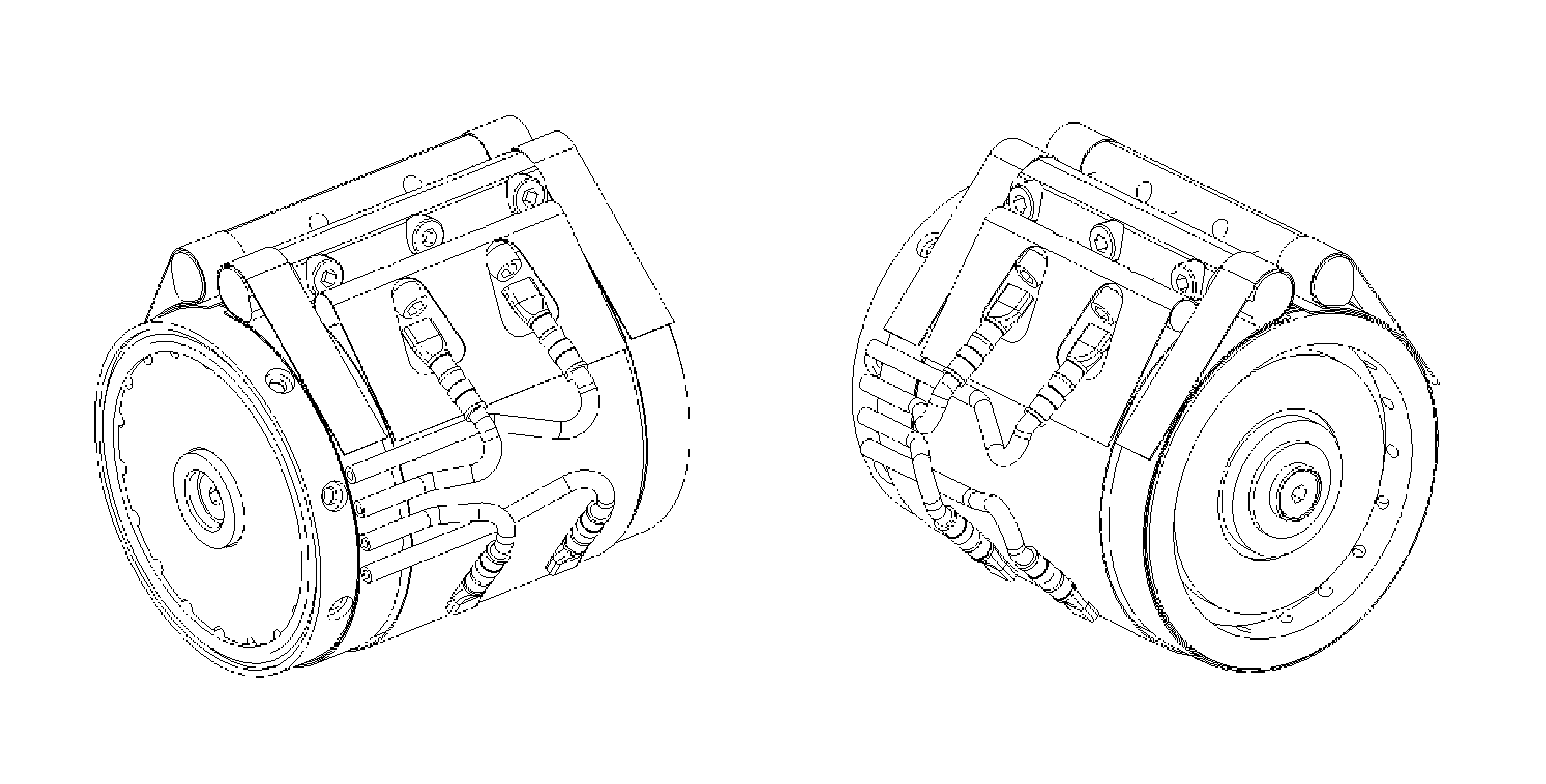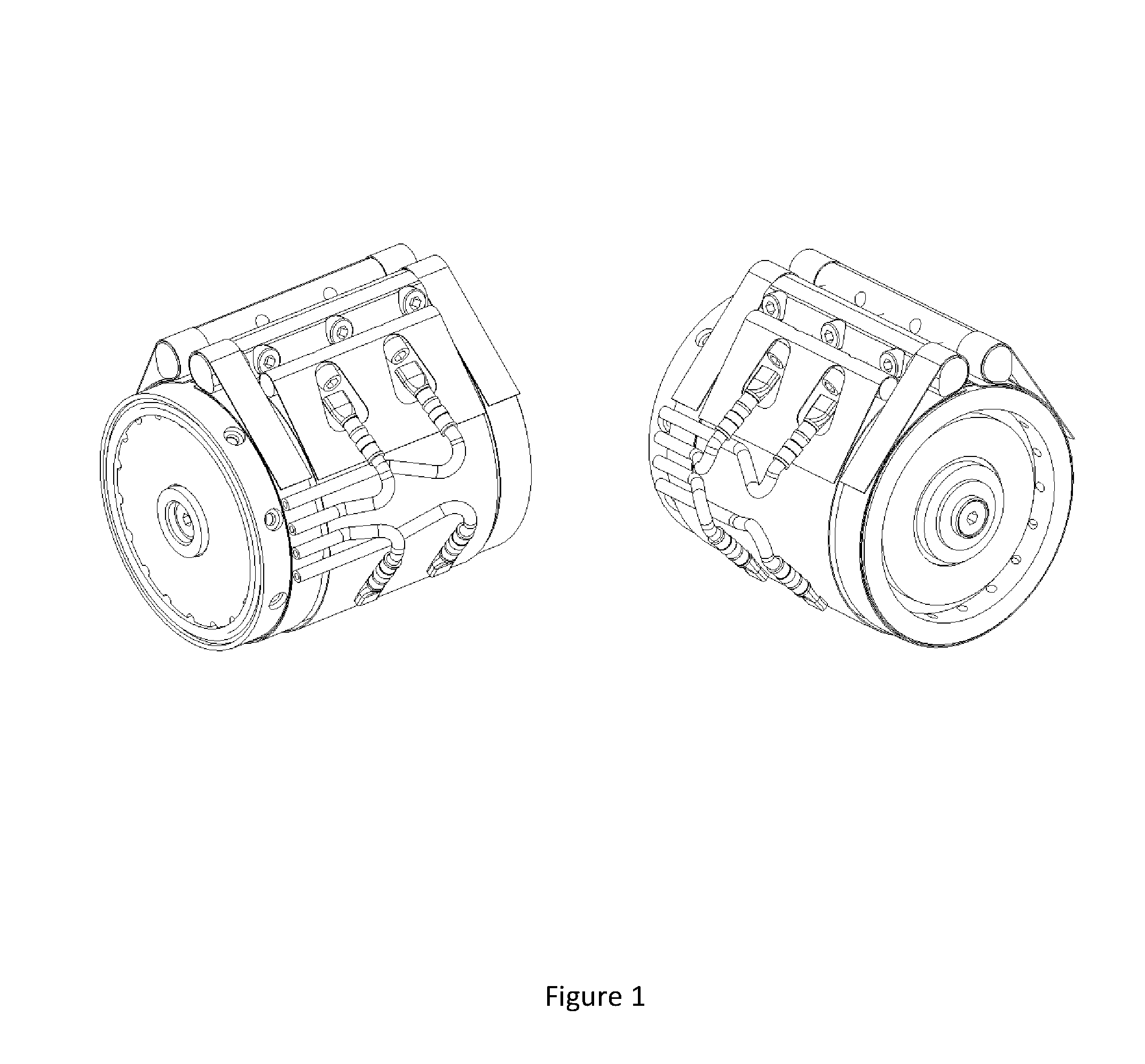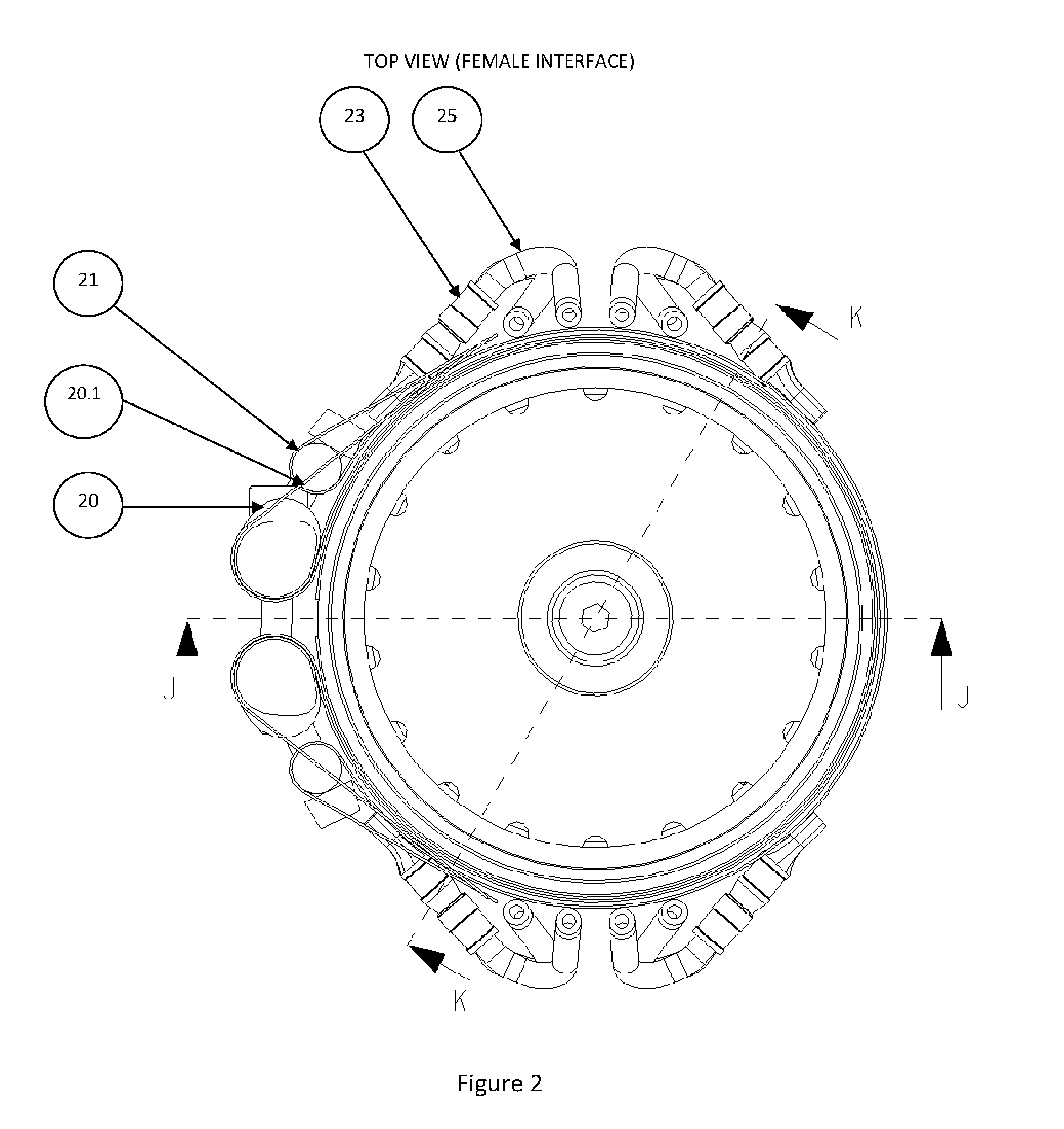Tubular electrochemical cell
a technology of electrochemical cells and tubular plates, applied in the direction of electrochemical generators, electrolytic organic production, instruments, etc., can solve the problems of uneven pressure in the mea, bending stress, heat generation, etc., to reduce bending stress in the end plate, improve heat extraction, and uniform pressure
- Summary
- Abstract
- Description
- Claims
- Application Information
AI Technical Summary
Benefits of technology
Problems solved by technology
Method used
Image
Examples
example 1
[0132]A tubular cell was made according to FIG. 1, and using the following components:[0133]Coaxial / tubular electrolyser running in a tower of water, without cooling water[0134]Anode: 1 micron Pt on Ti[0135]Cathode: Ni Cr[0136]Membrane material: Cationic hydrophilic ionic polymer membrane coated with 1 mg Pt / cm2 per side.[0137]Hydrated in the device[0138]Active area: 137 cm2-141 cm2 [0139]Membrane thickness: 0.4-0.45 mm[0140]Torque on active area tightening screws 3 Nm[0141]No cooling water circulated[0142]Temperature: 25 to 28° C.
[0143]The device was run successfully as an electrolyser up to 1 A / cm2.
example 2
[0144]Current density was plotted against voltage for an evaluation test electrolyser cell according to the invention (9 cm2) and a coaxial stack of electrolyser cells according to the invention (175 cm2). The plots were almost identical, showing that electrical resistive losses associated with the higher current in stacks are negligible. Additionally, the additional connections in the stack do not cause problematic voltage rise. This also proves the ability to maintain good appropriate and even contact pressure across the surface of the MEA, this homogenous pressure ability is backed up by pressure sensitive paper testing.
example 3
[0145]A 5-cell electrolyser stack according to the invention was constructed, with an active area of 150 cm2, an anode of 1 μm pt on Ti, a cathode of Ni Cr, and a hydrophilic polymeric membrane of thickness 0.6 mm.
[0146]A graph was plotted of cell position vs voltage and it was found that there was no detrimental voltage rise linked to cartridge position.
PUM
| Property | Measurement | Unit |
|---|---|---|
| pressures | aaaaa | aaaaa |
| pressures | aaaaa | aaaaa |
| shore hardness | aaaaa | aaaaa |
Abstract
Description
Claims
Application Information
 Login to View More
Login to View More - R&D
- Intellectual Property
- Life Sciences
- Materials
- Tech Scout
- Unparalleled Data Quality
- Higher Quality Content
- 60% Fewer Hallucinations
Browse by: Latest US Patents, China's latest patents, Technical Efficacy Thesaurus, Application Domain, Technology Topic, Popular Technical Reports.
© 2025 PatSnap. All rights reserved.Legal|Privacy policy|Modern Slavery Act Transparency Statement|Sitemap|About US| Contact US: help@patsnap.com



